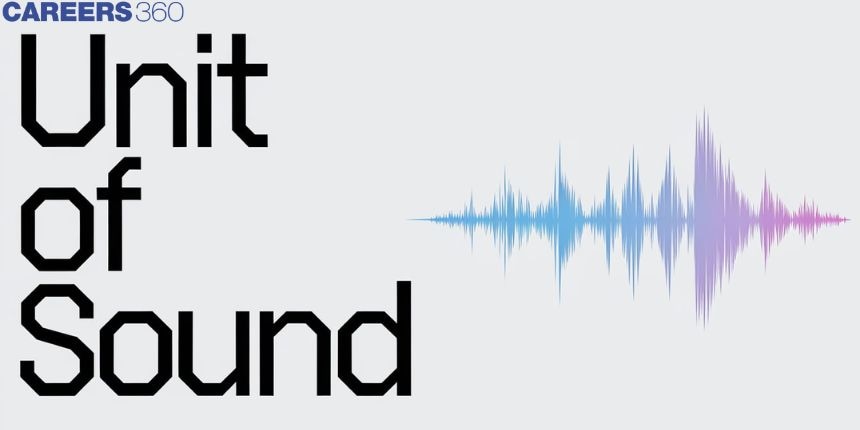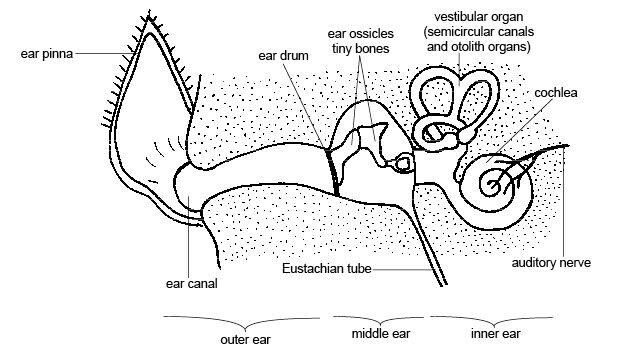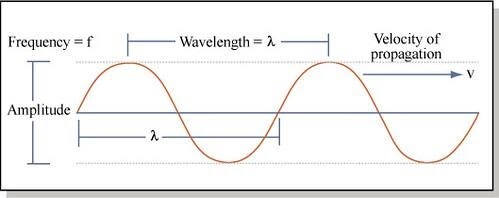Unit of Sound - SI, CGS and Other Sound Units
In this article, You will learn about the unit of loudness and how sound is measured. Sound is a form of energy which cause the sensation of hearing and to study it properly, we use specific units. The loudness of sound is usually measured in decibels (dB), while its frequency is measured in hertz (Hz) both in the SI system. In the CGS system the unit of frequency is cycles per second. The intensity of sound, which tells us how strong or powerful a sound is, is measured in watt per square meter (W/m²).
This Story also Contains
- What is the sound?
- What Is the SI Unit of Sound?
- Characteristics of sound:

What is the sound?
A sound is a form of energy that comes from the vibration of particles. Vibration is a to and fro motion of a body that is also called oscillation. Irregular vibrations with irregular wave patterns are called noise whereas, the regular periodic vibration with regular wave patterns is called music.
Propagation of sound is the travelling of sound waves. For the propagation of sound waves, a medium is essential. When sound waves are transmitted from the medium such as solid, liquid, or gas then propagation takes place. Sound waves do not pass through the vacuum. There must be the presence of matter for the waves to pass through it.
Also read -
- NCERT Solutions for Class 11 Physics
- NCERT Solutions for Class 12 Physics
- NCERT Solutions for All Subjects
Propagation of sound in human ears:

Sound is collected by the funnel-shaped outer ear. The waves are transmitted through the ear canal to the eardrum. Vibrations are produced at the eardrum. In the middle ear, the vibrations are increased with the help of three bones. Then the sound wave is passed to the inner ear. There is a coiled part present in the inner ear called the cochlea. It is connected to the middle part of the ear at one side and the auditory nerve of the brain at the other side. It helps to hear the sound using the liquid present in it. Sound is sensible to the liquid containing nerve cells. Due to this, the brain commands signals as sound and then we hear.
What Is the SI Unit of Sound?
Sound is a type of energy that travels as waves through air, liquids, or solids. Since sound can be measured, its most common SI unit is the decibel (dB). The decibel is used to compare the strength or intensity of sound on a logarithmic scale, called the decibel scale (dB scale).
This scale helps us measure how loud or soft a sound is by comparing it to a reference level. For example, a whisper is around 30 dB, while loud music can reach 100 dB. It’s important to note that sound intensity in air and water differs, even if both are measured in decibels.
CGS Unit of Sound
Quantity Measured: Sound Intensity
CGS Unit: erg per square centimeter per second (erg/cm²/s)
Other Sound Units
Apart from the decibel (dB), there are several other units used to measure different properties of sound.
- Sone: Used to measure how loud a sound feels to our ears (subjective loudness).
- Phon: Used to express the perceived loudness level of sound.
- Hertz (Hz): Used to measure the frequency of sound, i.e., the number of vibrations per second.
- Watt per square meter (W/m²): Used to measure the intensity of sound, i.e., how much energy passes through an area per second.
Each of these units helps describe different aspects of sound depending on what is being studied or measured.
Characteristics of sound:
There are three main characteristics of sound:

FigureRepresentation of characteristics of sound wave
- Amplitude (A): When sound is produced, the maximum displacement of vibrating particles from their average position is called the amplitude of a sound wave. It represents the height of the wave. The amplitude of a wave is relative to the loudness. Loudness is the sound energy released per second. It connects the threshold intensity of normal hearing and the intensity of any given sound.
Loudness ∝ (Amplitude)2
So, the sound wave with a larger amplitude will have more loudness and the smaller amplitude has weak sound. SI unit of amplitude is meter. - Frequency (υ): Sound wave has a frequency which is referred to as pitch. When a wave passes through the medium, how often the particles of the medium vibrate refers to the frequency of that wave.
Frequency= Number of oscillation/Total time
Sound waves are related to atmospheric pressure. That is, when sound waves travel in the air medium, there will be a periodic change in atmospheric pressure. The frequency of sound waves is also defined as the number of pressure variations per second. The CGS unit of frequency is Hertz or Hz. The CGS system of measurement is smaller than the SI unit. Based on frequency, the sound is divided into infrasound and ultrasound. Infrasound is any sound having a frequency below 20Hz and ultrasound has a frequency above 20 kHz. Below is a table representing the list of the frequency range of common examples:
|
Examples
|
Lower frequency (Hz)
|
Upper frequency (Hz)
|
|
Pigeon
| 1 | 20 |
| Fish | 800 | 1000 |
| Guitar | 80 | 1200 |
| Bats | 20 | 120x103 |
| Dogs | 50 | 45 x103 |
| Dolphins | 0.25 | 200x103 |
| Radio waves | 300x109 | 3x103 |
| Humans | 20 | 20x103 |
- Time-period (T): In a sound wave, the time taken by the particles to complete one vibration cycle is called the time period of the wave.
Time period=Time/Number of vibration cycle
Frequency and time period are inversely proportional to each other.
f=1/T
Also Read:
- NCERT Solutions for Class 11 Physics Chapter 15 Waves
- NCERT Exemplar Class 11 Physics Solutions Chapter 15 Waves
- NCERT notes Class 11 Physics Chapter 15 Waves
Also check-
- NCERT Exemplar Class 11th Physics Solutions
- NCERT Exemplar Class 12th Physics Solutions
- NCERT Exemplar Solutions for All Subjects
NCERT Physics Notes:
Frequently Asked Questions (FAQs)
dB or decibel is the unit of noise also.
The frequency of sound is measured in hertz or Hz.
No, phon is not an SI unit.
The unit of loudness of sound/ si unit of loudness/ loudness of sound is measured in units of sone.
The frequency of an emitted sound is called the pitch. The frequency of vibration is responsible for the pitch or shrillness.
It is a unit.